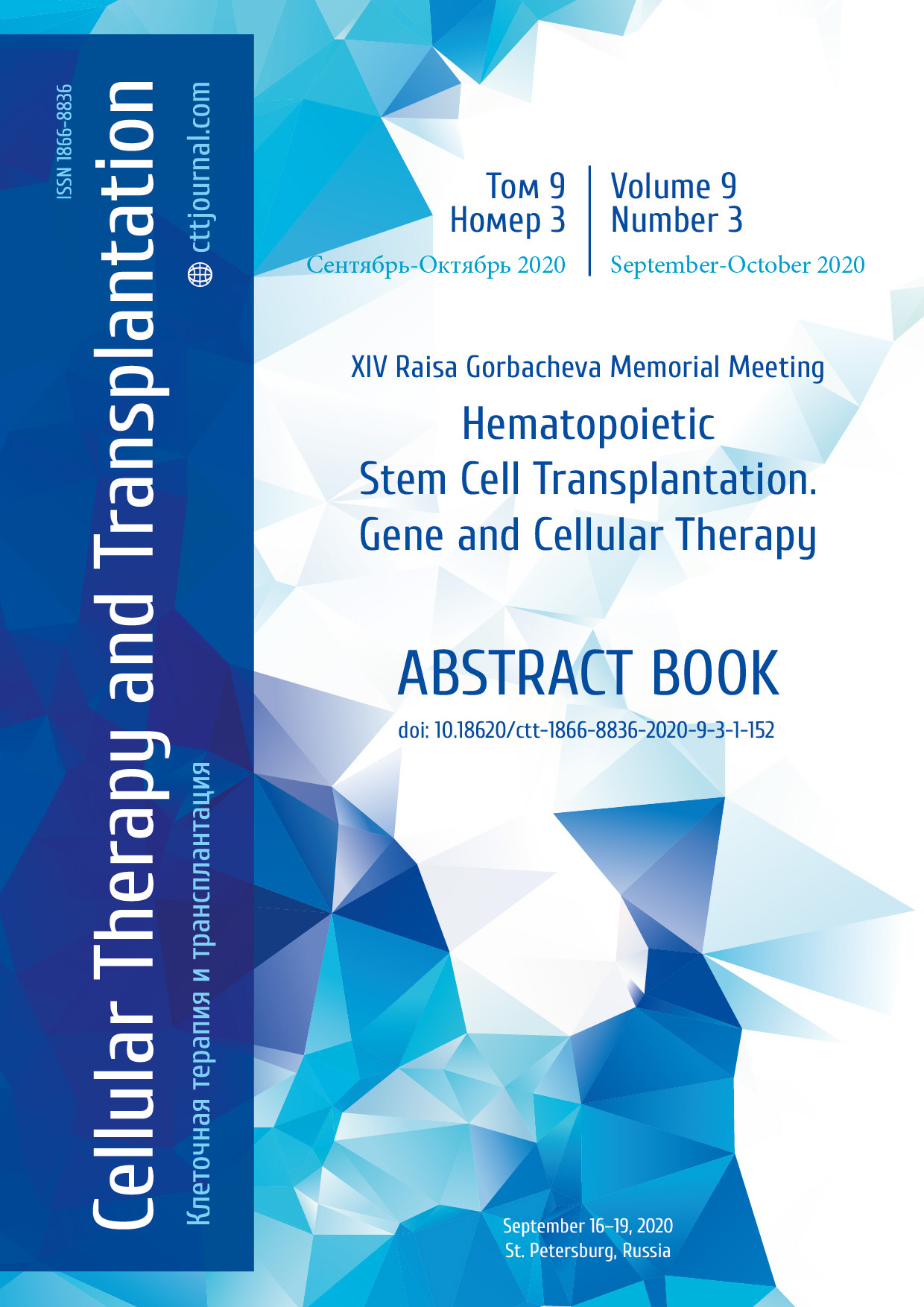AL-01. Efficacy of gilteritinib in adult patients with relapsed or refractory acute myeloid leukemia FLT3+
Sergey N. Bondarenko1, Elena V. Morozova1, Anna G. Smirnova1, Yulia Yu. Vlasova1, Bella I. Ayubova1, Elena V. Karyagina2, Ridvan K. Ilyasov3, Natalya A. Zorina4, Svetlana S. Belyaeva5, Nikolay Yu. Tsvetkov1, Michail M. Kanunnikov1, Yuliya D. Oleynikova1, Ildar M. Barkhatov1, Tatyana L. Gindina1, Ivan S. Moiseev1, Alexander D. Kulagin1
1 RM Gorbacheva Research Institute of Pediatric Oncology, Hematology and Transplantation, Pavlov University, St. Petersburg, Russia
2 City Hospital No. 15 of St. Petersburg, Russia
3 Crimean V. М. Efetov Republican Oncological Clinical Dispensary, Republic of Crimea, Russia
4 Kirov Research Institute of Hematology and Blood Transfusion, Kirov, Russia
5 Belgorod Regional St.Joasaph Clinical Hospital, Belgorod, Russia
Contact: Dr. Sergey N. Bondarenko, e-mail: dr.sergeybondarenko@gmail.com
Summary
Introduction
FMS-like tyrosine kinase 3(FLT3) gene mutations occur in 20-30% of adult patients with acute myeloid leukemia (AML). FLT3-ITD mutations are most commonly observed and have prognostic significance in patients with normal karyotype. Remissions are rarely achieved with chemotherapy after the relapse (Rel), and are usually very short. In 2018, the FDA approved a second-generation FLT3-inhibitor gilteritinib (Gilt) for the treatment of relapsed and refractory (r/r) AML FLT3+. Objective of the study was to evaluate the efficacy and safety of FLT3 kinase inhibitors in adult AML.
Patients and methods
The study included 28 patients with r/r AML (n=22) and 6 patients with persistence of minimal residual disease(MRD+) after allogeneic hematopoietic stem cell transplantation (allo-HSCT) who received Gilt monotherapy at a dose of 120 mg/d. Median age 42 (18-79) years. Median follow-up was 6 (1-14) months. The FLT3-ITD mutation was detected in 26 cases (93%), FLT3-TKD mutation was revealed in 2 patients (7%). Additionally, NPM1 was detected in three, WT1 and BAALC overexpression, in 11 and 2 patients, respectively. The intermediate prognostic group, according to ELN2017 (PG-ELN2017), included 17 patients (61%), nine of them had normal karyotype. The unfavorable group included 11 (39%) patients, four of them showed a complex karyotype abnormalities, five patients had t(6;9)(p23;q34). The r/r AML group included 22 patients (77%): primary-resistant (PrRes), in 9 patients (41%); Rel1, in 9 cases (41%); with Rel2, 4 patients (18%). MRD+ group was presented by six patients (23%). Allo-HSCT was performed after Gilt therapy in 6 patients (21%). In 10 cases (36%), Gilt was used after allo-HSCT (4 patients with Rel, 6 patients with MRD+).
Results
In r/r AML group, complete remission(CR) was achieved in 18%(4/22), CR with incomplete hematological recovery (nCR) was observed in 18% of cases (4/22), and partial remission(PR) was revealed in 32% of the patients (7/22). Overall response (OR) was 68% (15/22). All the patients who achieved CR responded to the first cycle, with nCR, 2 patients, each after the first and second cycles. The OR frequency did not depend on PG-ELN2017 and levels of blast cells. The OR was 78% (7/9) for PrRes and Rel1, and only 25% (1/4) for Rel2. After OR, 27% of the patients (6/22) underwent allo-HSCT. 27% (4/15) developed an early Rel at 1, 3, 6, and 7 months. Median CR duration was 3 (1-6.7) months. Causes of death were as follows: eight patients deceased with AML progression, 4 patients died from infectious complications (sepsis, pneumonia), 1 patient, from cerebral hemorrhage. The median duration of therapy was 4 cycles (1-12). Currently, 41% of patients (9/22) are alive. In the AML MRD+ group, CR was achieved in all six patients after the first cycle. The median duration of therapy was 12(11-14) cycles. At the time of data analysis, there were no cases of relapse and deaths. The therapy was associated with some adverse events: drowsiness, distraction, headaches, QT prolongation (3.5% each); nausea, shortness of breath, increased blood pressure in 7% of cases each (2/28); bone and joint pain in 14% (4/28); edema, dryness and itching of the skin in 18% of cases each (5/28); febrile neutropenia was revealed in 39% (11/28); grade 3 neutropenia, in 11% (3/28); grade 4 neutropenia, in 71% (20/28); grade 1-2 thrombocytopenia, in 25%(7/28), grade 3-4 thrombocytopenia, in 57% (16/28); infectious complications, in 25% (7/28), including 4 pneumonias, and 3 sepsis cases. No cases of differentiation syndrome were observed in any patient. No drug withdrawal was required.
Conclusion
This study has demonstrated efficacy and an acceptable toxicity profile when Gilt is administered alone.
* Gilteritinib was provided as part of the Early Access Program.
Keywords
Acute myeloid leukemia, targeted therapy, gilteritinib.


